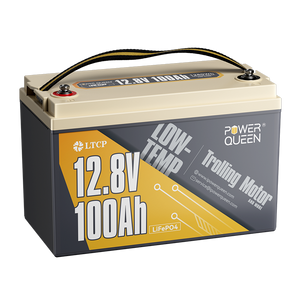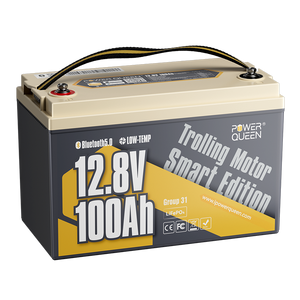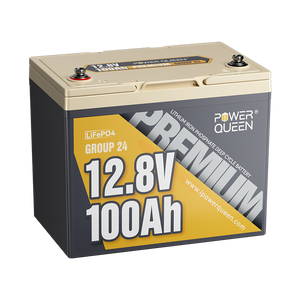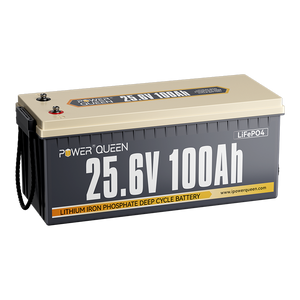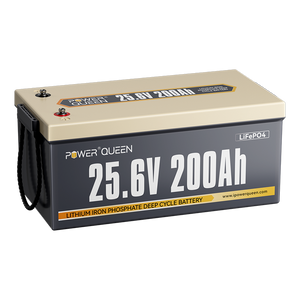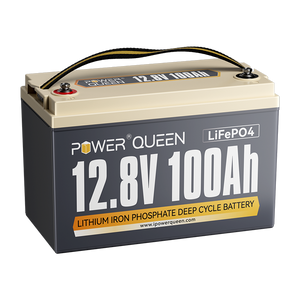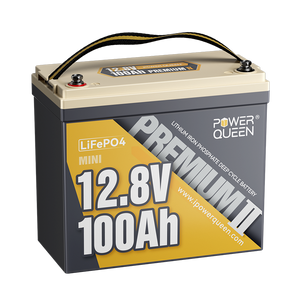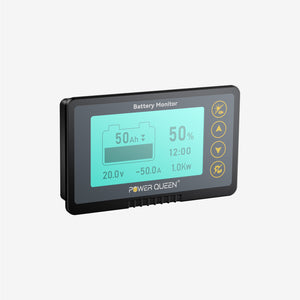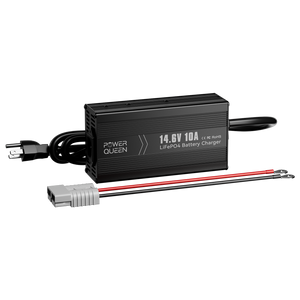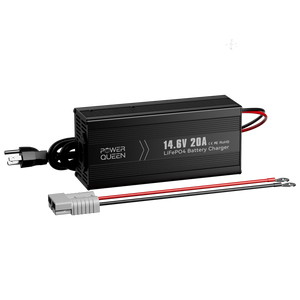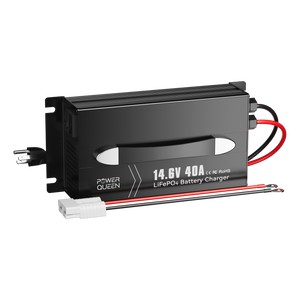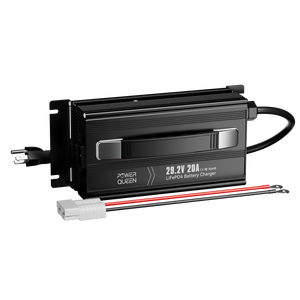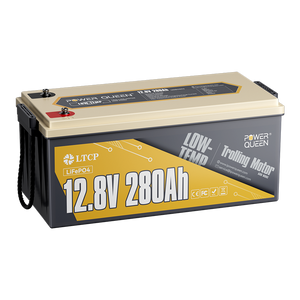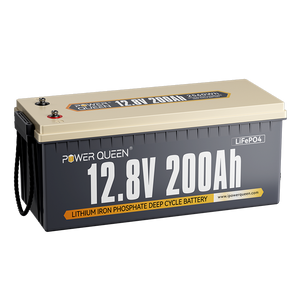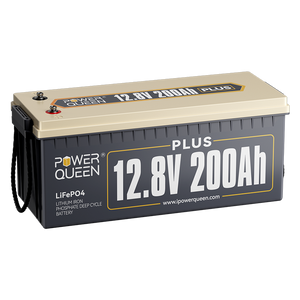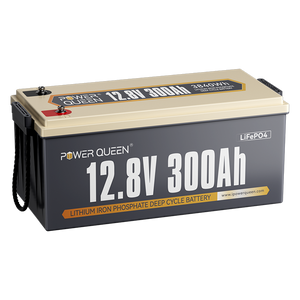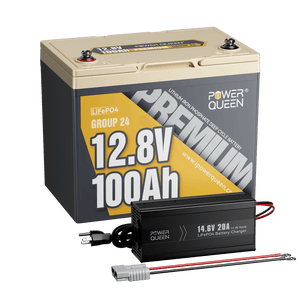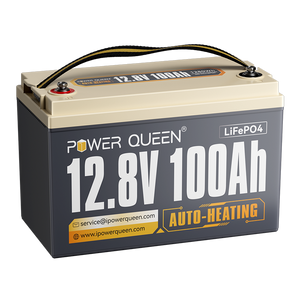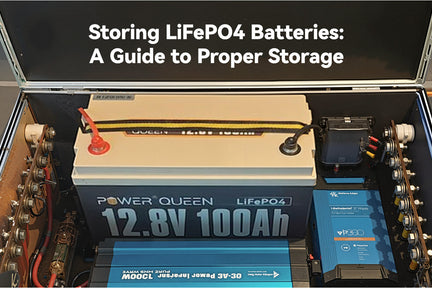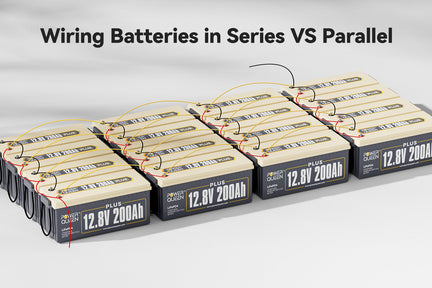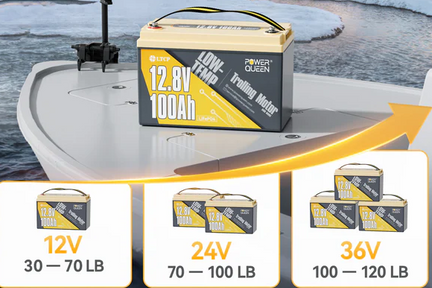How To Wire Batteries in Series and Parallel
How to connect your batteries is one of the most crucial factors to take into account when constructing a solar power system. Battery connections in parallel or series are two popular techniques. Each approach includes potential drawbacks as well as benefits, so it's important to know how they differ before choosing one.
Part 1. Know About Series Connection
1. What is Battery Series Connection
LiFePO4 batteries connected in series are frequently utilized to boost a battery pack's overall voltage output. In order to achieve the desired voltage, several cells must be connected in a sequential manner, with the positive terminal of one cell connected to the negative terminal of the subsequent cell. This technique produces a higher voltage output, but the battery pack's total capacity is still the same as that of a single cell. Series connections are widely used in applications like solar power systems, electric vehicles, and building backup power supplies because of their capacity to deliver high voltage.

Let's say four 12.8V 100Ah batteries are connected in series. The battery capacity, expressed in amp hours (Ah), stays at 100 Ah in such scenario, but your combined voltage will be 51.2V.
![⚡[Now C$309]⚡Power Queen 12V 100Ah LiFePO4 Battery](//ca.ipowerqueen.com/cdn/shop/files/PQ-12.8V100Ah-A100.jpg?crop=center&format=webp&v=1754033262&width=400)
![⚡[Now C$309]⚡Power Queen 12V 100Ah LiFePO4 Battery](http://ca.ipowerqueen.com/cdn/shop/files/PQ-12.8V100Ah-A100.jpg?crop=center&format=webp&v=1754033262&width=400)
2. The Functions of Series Connection
- Increased voltage output: The voltage output is raised to satisfy the needs of high-voltage applications by connecting cells in series.
- Efficient power source: Devices that need low current and high voltage can be effectively powered using series connections. This is a result of the voltage rising while the total capacity stays constant.
- Battery management: When charging or discharging batteries connected in series, the system can be readily handled by regulating the voltages across each cell.
- Safety: Series circuits are less prone to overheating since each cell carries the load equally. Thus, the likelihood of a single cell getting overcharged or overheated is reduced, which promotes the safety of the battery pack.
- Scalability: Scalability is made possible by the series connection, which enables the addition of more cells as needed to raise the system's total voltage output.
3. The Possible Problems with the Series Connection
- Reduced overall capacity: The total capacity of the battery system stays the same when cells are connected in series, which means that less energy can be stored even while the voltage output rises.
- Risk of over-discharge: One cell in a battery pack connected in series may be permanently damaged or even fail, as well as potentially harm other cells in the series, if it is discharged below the minimum safe threshold.
- Complex management requirements: Care must be taken while connecting cells in series to prevent overcharging or undercharging, which can result in uneven charging and ultimately compromise the battery system's overall health.
Power Queen suggests adding additional batteries to your battery bank that are purchased within three months of your initial battery purchase in order to alleviate these problems. It is important to make sure that all of the cells in the series-connected pack have comparable capacities and ages. This makes it easier to connect your new batteries into your present system and guarantees that they will have a charge cycle life that is comparable to your current batteries. To avoid overcharging and ensure effective battery pack functioning, proper charging and voltage monitoring are also crucial.
Part 2. Everything Related to Parallel Connection
1. What is Battery Parallel Connection
The term "battery parallel connection" describes the process of joining several batteries' positive and negative terminals to one another. This arrangement increases the system's total capacity while maintaining the battery bank's voltage output, which is identical to that of a single battery. When substantial energy storage is needed, like in off-grid solar power systems or electric vehicles that need to run for a long time, parallel connections are frequently utilized.

Four 12.8V 100Ah batteries, for instance, are connected in parallel. The voltage stays at 12.8V in that scenario, and your combined capacity will be 400Ah.
2. The Functions of Parallel Connection
- Increased capacity: Increasing the battery system's total capacity while maintaining a steady voltage output is the main purpose of parallel connections.
- Efficient use of energy: Devices connected in parallel can draw greater current without affecting the system's total voltage, resulting in a more effective use of energy.
- Longer runtime: Applications requiring longer runtime, such electric cars or off-grid solar power systems, frequently use parallel connections.
- Improved reliability: The system becomes less reliant on any one battery when several batteries are connected in parallel, increasing the system's dependability.
- Easy management: Batteries in a parallel circuit can be charged and discharged separately without impacting other batteries in the system since each battery receives the same voltage.
- Scalability: Scalability through the addition of more batteries as needed to boost the system's total capacity is made possible by parallel connections.
3. The Possible Problems with Parallel Connection
Parallel connections have a number of advantages, but there are also some risks and difficulties that should be considered.
- Increased risk of overcharging and overheating: Because a parallel connection expands the battery system's total capacity, it becomes simpler to draw more current than the batteries can manage, which increases the risk of overcharging, overheating, and even fire.
- Difficulty in balancing the charge across batteries: Due to differences in capacity or age, parallel battery connections may become unbalanced, resulting in decreased lifespan and performance.
- Reduced efficiency: Because the internal resistance of each battery influences the system's overall resistance, which can lower the quantity of energy provided to the load, parallel connections may result in decreased efficiency.
Part 3. Comparison Between Series and Parallel Connections of LiFePO4 Batteries
In this section, we will look at the similarities and differences between LiFePO4 battery connections in series and parallel.
Similarities:
- Ability to increase overall battery performance: The battery pack's overall performance can be improved via both series and parallel connections. Whereas a parallel connection boosts capacity, a series connection raises output voltage.
- Use in various applications: Numerous devices, including solar homes, electric vehicles, boats, RVs, and other off-grid systems, use both series and parallel connections.
Differences:
- Voltage output: While a parallel connection does not change the voltage output from a single cell or battery, a series connection raises the battery pack's overall voltage output.
- Capacity: A parallel connection boosts the battery pack's total capacity, whereas a series connection simply affects the voltage output and has no effect on capacity.
- Efficiency: Since each cell or battery charges and discharges independently, a parallel connection is typically more efficient than a series connection, which may be affected if one cell or battery fails.
In conclusion, LiFePO4 batteries connected in series and parallel offer comparable benefits, but they vary in terms of efficiency, capacity, and voltage output. The particular application and required performance attributes determine the connection type to be used.
Part 4. FAQs about Battery Series & Parallel Connection
1. How many batteries are able to be connected in series?
The battery and its manufacturer usually determine how many batteries can be connected in series. For example, Power Queen allows a 48-volt system to be created by wiring up to four LiFePO4 batteries in series. It is essential to check with the battery manufacturer to avoid going above the suggested limit for batteries connected in series.

2. How many batteries can you wire in parallel?
Generally speaking, as long as the batteries are equivalent and meet the same requirements, there is no restriction on the number of batteries that can be linked in parallel. The battery's charging method and the wire size must be able to manage the higher current demand from the parallel connection, though. To guarantee optimum performance and safety, it is always advised to adhere to the manufacturer's instructions and consult a specialist before connecting multiple batteries in parallel.
3. Do batteries last longer in series or parallel?
It is challenging to draw firm conclusions on which connection style extends battery life because series and parallel connections have varied effects on battery lifespan.
Batteries connected in series have their positive terminals connected to their negative terminals, increasing the voltage output. This arrangement may result in increased heat and stress exposure for the battery, thus shortening its lifespan. The battery pack as a whole may suffer if one cell degrades or fails.
Negative terminals are connected to negative terminals and positive terminals are connected to other positive terminals when batteries are connected in parallel. Although the capacity is increased, the voltage output is the same as with a single battery. By more uniformly distributing the load among the cells, a parallel connection lowers the possibility of overheating and an early overload-related failure.
The longevity of batteries is influenced by a number of variables, such as the battery type, usage habits, maintenance, and temperature. Depending on the circumstances, batteries may live longer in parallel or series. To guarantee the best possible performance, longevity, and safety while connecting several batteries in series or parallel, it is always advisable to heed the manufacturer's instructions and consult an expert.
Conclusion
In conclusion, selecting the appropriate battery connection type is crucial when constructing an off-grid system, such as a solar power system. The decision will rely on your particular requirements and application. Both series and parallel connections offer benefits and drawbacks.
While a parallel connection offers more capacity for a longer runtime, a series connection is best for applications that need high voltage. Every connecting technique has some drawbacks, like the possibility of overheating or decreased effectiveness. Appropriate battery management and maintenance are essential to reducing these dangers.
To guarantee optimum performance, safety, and longevity while connecting batteries in series or parallel, it is advised to adhere to the manufacturer's instructions and consult an expert. You may optimize your battery pack's performance and energy storage capacity for off-grid applications by using the appropriate connection type and battery management.

